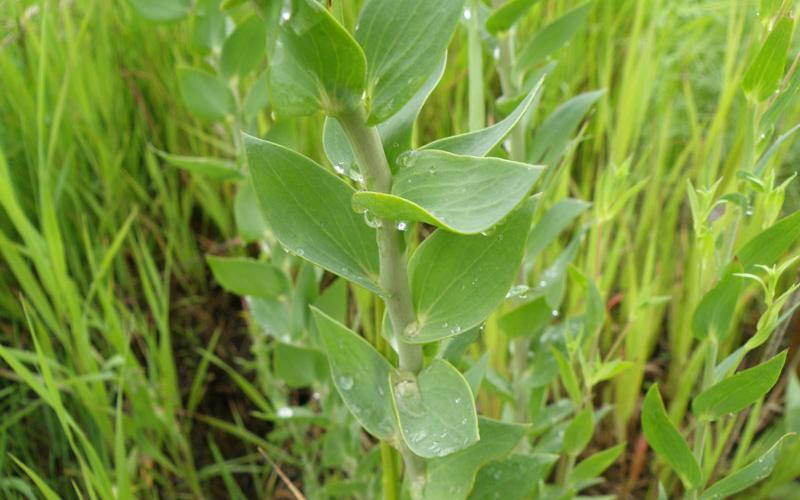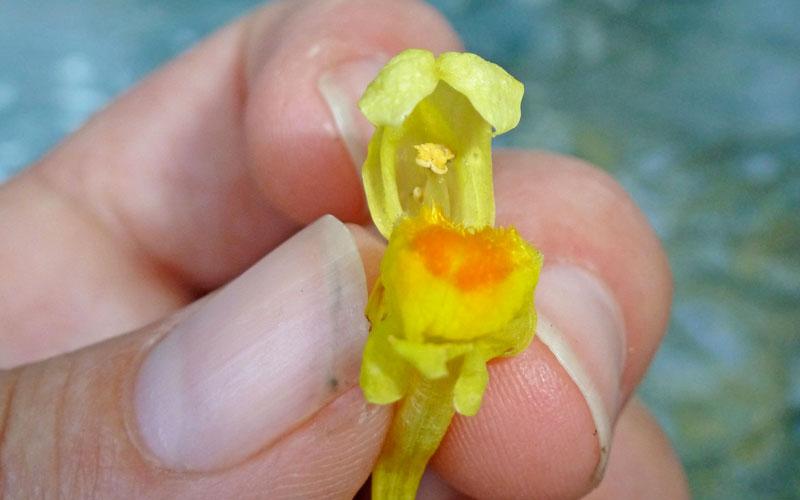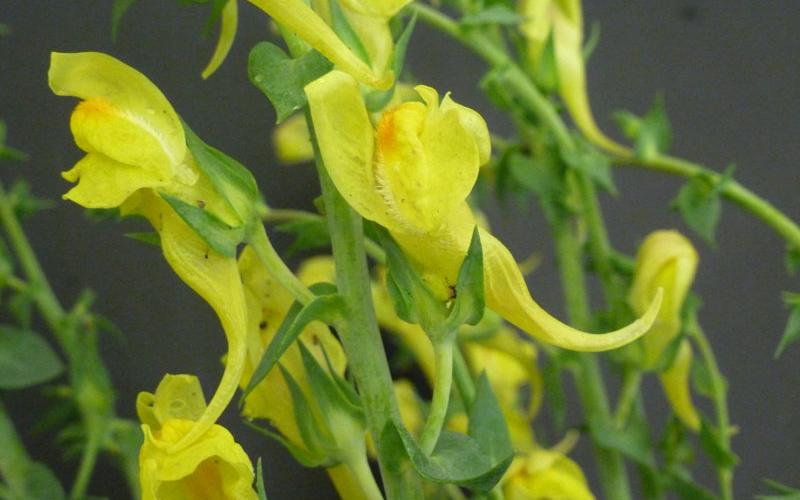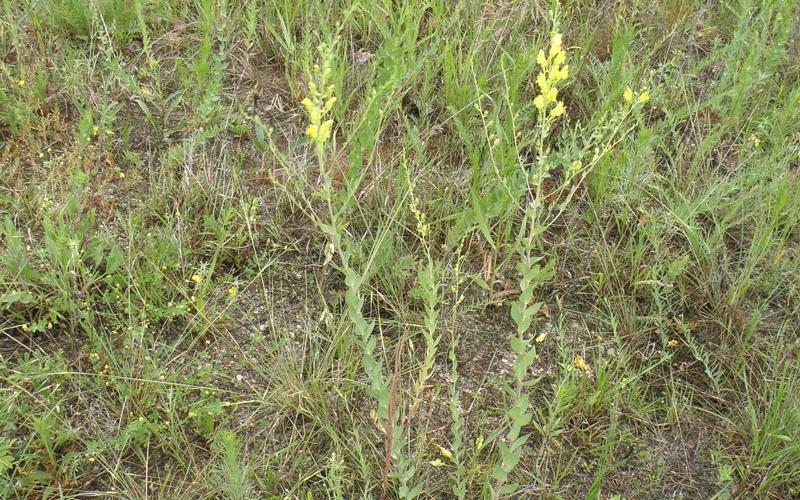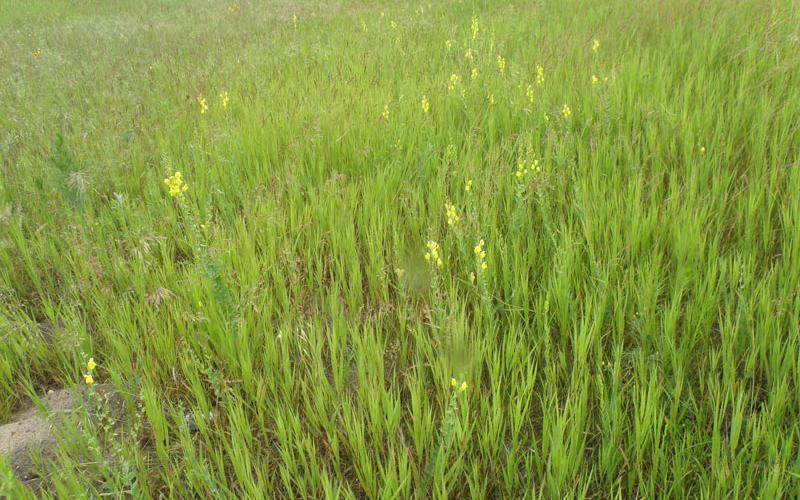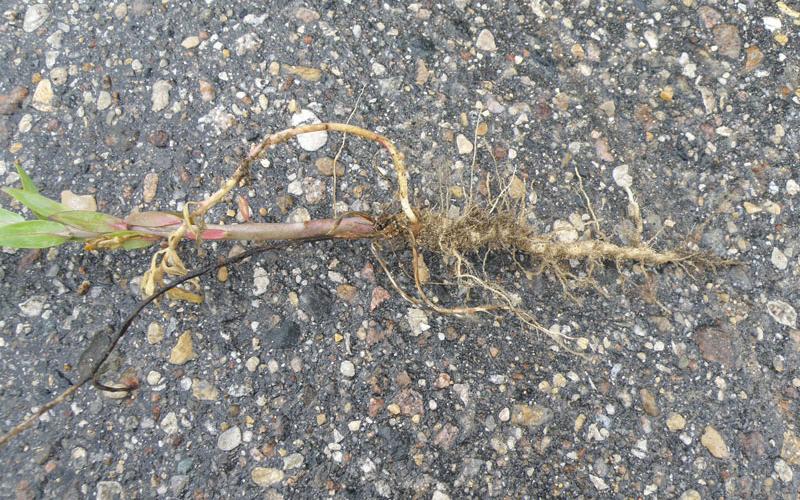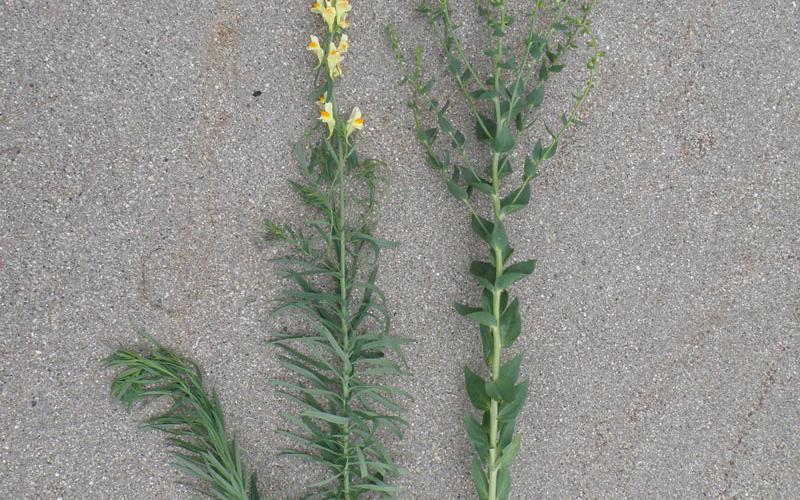Common Names: Dalmatian Toadflax, Broadleaf Toadflax, and Wild Snapdragon
Scientific Name: Linaria dalmatica (L.) Mill. ssp. dalmatica
Related Species: Yellow toadflax, Linaria vulgaris (L.) Mill
Legal Status
All above and below ground parts of the plant must be destroyed. Additionally, no transportation, propagation, or sale of this plant is allowed. Failure to comply may result in an enforcement action by the county or local municipality.
Background
Minnesota is fortunate to have very few Dalmatian toadflax infestations. The goal is to eradicate infestations before Dalmatian toadflax spreads and becomes a serious weed issue in our state. Dalmatian toadflax is native to the Mediterranean region and was originally introduced as an ornamental to the west coast of North America in the late 1800s. It escaped cultivation and has overtaken grasslands in pastures, rangelands, and natural areas in the west.
Description
- Dalmatian toadflax looks like a large, yellow snapdragon.
- It is a short-lived perennial that grows up to 4 feet tall. Both leaves and stems are a waxy, bluish-green.
- Leaves are heart-shaped, 1 to 3 inches long and clasp the stem.
- Multiple flowers are arranged in spikes on the stems. They are bright yellow and sometimes have an orange center. The flowers are 1 to 1½ inches long and have spurs. Flowering occurs from early summer to early fall.
- Seed pods are ½ inch long and contain 140 to 250 small dark brown to black seeds with wings. Most of the upper stems die back in winter and new stems emerge in the spring.
- Yellow toadflax is common in Minnesota and looks similar. To distinguish the two species, compare the small, narrow, linear yellow toadflax leaves to the thick, waxy, clasping, heart-shaped Dalmatian toadflax leaves.
Habitat
Dalmatian toadflax prefers sunny areas with well-drained often coarse-textured soils. These areas can include roadsides, pastures, residential areas, cemeteries, gravel pits, and waste areas.
Means of spread and distribution
Dalmatian toadflax can quickly colonize an area because it spreads by sprouts from the lateral roots and by seed. Over its lifetime, a single plant can produce up to 500,000 seeds that can persist in the seedbank for up to 10 years. Dalmatian toadflax flowers have both male and female parts and the species is self-compatible, meaning that a single plant can produce viable seed and start an infestation. Seed dispersal begins shortly after flowering and continues into winter. Dispersal can be by wind, water, wildlife, vehicles and equipment, forage, and livestock.
Most Dalmatian toadflax infestations are in western states. In these areas, Dalmatian toadflax has increased at a rate of 8-29% per year depending on the site. In Minnesota, there is a confirmed infestation in Kittson County in the far northwestern part of the state. Herbarium specimens were collected at sites in Cook and Cass Counties in northeastern and north central Minnesota respectively, but there are not confirmed infestations at these locations.
Impact
Dalmatian toadflax outcompetes desirable species to form large monocultures. Infestations in western states have reduced livestock production, land values, biodiversity, and wildlife habitat.
Prevention and management
- Prevent seed from moving with hay, vehicles, and equipment from infested areas, mostly western states. Also prevent seed movement with gravel from infested pits.
- For existing infestations, develop a long-term, site-specific management plan. The seedbank can persist for up to 10 years so management practices must be implemented repeatedly as the infestation regenerates from the seedbank.
- Repeated hand-pulling and root digging is an option to control small infestations. Pulling all of the lateral roots is difficult so it will need to be repeated frequently or roots will need to be dug. Flowering stems should be bagged or burned. Bag stems before digging up roots to minimize seed dispersal.
- Control with herbicides will require repeated treatments at fairly high application rates. It is important to use an appropriate surfactant to enable the herbicide to penetrate the thick, waxy leaves. Herbicides should be applied in the late spring as the plants begin to bolt (send up flowering stems) or in the fall before the plants die back. For specific herbicide recommendations, contact the University of Minnesota Extension or find recommendations under the heading “Toadflax, Dalmatian (Linaria dalmatica) and Yellow (L. vulgaris)” within the “Control of Problem Weeds” section of the Pacific Northwest Weed Management Handbook.
- If the area can be cultivated, regular tillage is an option for control.
- Mowing is not an effective control method and mowing equipment can spread seed and root fragments to uninfested areas.
- Prescribed fire does not kill Dalmatian toadflax and may increase infestation size and density.
- Biological control is not recommended because Dalmatian toadflax has very limited distribution in Minnesota so should be eradicated. Biological control is a practice that does not eradicate the target species.
Toxicity
Dalmatian toadflax contains an iridoid glycoside (a quinoline alkaloid) and a peganine so it is toxic to some livestock such as cattle. However, cattle avoid Dalmatian toadflax and there are no confirmed reports of livestock poisoning.
